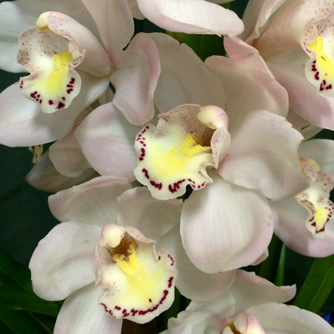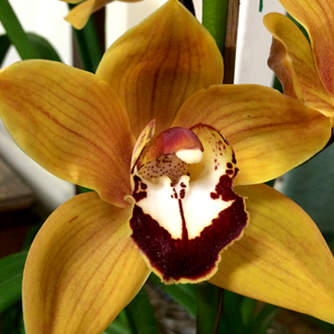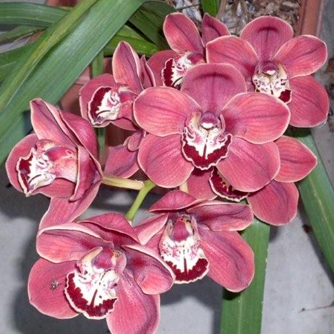Cymbidium Orchids
BackWhilst many orchid varieties can be quite fussy, cymbidiums are actually easy to grow in most parts of Australia. Get the basics right and you’ll be enjoying stunning winter flowers for up to 3 months in shades of white, yellow, orange, burgundy, pink, brown and even green.
Location, Location, Location
Light is probably the most critical factor when it comes to cymbidiums. Too much shade will produce attractive dark green foliage but no flowers. Too much sun and the leaves will bleach to yellow and burn. Plants will flower but the damaged foliage ruins the overall appearance. Most importantly they’ll be constantly stressed and more vulnerable to pest and disease attack.
Essentially cymbidiums want lots of light but not harsh hot sunlight. Plants will enjoy gentle winter sunlight but need to be protected from the strong summer sun. Dappled shade under a deciduous tree is ideal. Or look for a spot which gets morning sunlight but protection in the afternoon during summer.
Getting it right can sometimes be a bit tricky. Use the leaf colour as an indicator and aim for mid to light green leaves with no yellow tones.
Good air circulation is also important for cymbidiums but avoid placing in windy locations which can break flower spikes and cause plants to dehydrate.

Pots or Garden Beds?
Cymbidiums are most commonly grown in pots where they perform extremely well. This is very convenient as you can bring them indoors to enjoy the flowers or move them about to keep the light levels right as the seasons change. Always use specialty orchid potting mix which is predominantly made up of large chips of bark. This ensures the orchid will have very fast drainage within the pot. Cymbidiums, like most orchids, do not like having wet feet.
Cymbidiums can also be grown directly in the ground provided they have excellent drainage. If you’re unsure then stick to pot cultivation rather than risk your plant rotting away.
Fertilising Cymbidium Orchids
Cymbidiums really benefit from being fed regularly and will produce many more flower spikes.
Apply a combination of OCP eco-seaweed and OCP eco-aminogro every 2-3 weeks for absolutely brilliant healthy orchids. You can apply either as a foliage spray or simply water into the pot.
After winter flowering finishes give your plant a rest period of several weeks but be sure to restart feeding no later than October.

Dividing Cymbidium Orchids
Every 3 years is a good time to divide your cymbidium orchids. They do love to be crowded but eventually overcrowding will impact on flowering and make it harder to control any pest or disease problems.
Divide crowded clumps immediately after flowering finishes. If you wait too long it will affect next year’s flowering.
Don’t be daunted about how to divide your cymbidium as it’s actually really easy. Plus the plants are very forgiving! Simply pull the clump out of the pot or ground and just cut right through the root mass. In many cases cutting into quarters is a nice balance between thinning the plant out but still having a decent sized plant to produce good flowering next season. As a minimum each new clump should have 3-4 bulbs with leaves and a couple of leafless bulbs.
Remove any damaged or dead parts, including the old dry papery roots, and check for signs of pests. Replant into orchid potting mix and water in with eco-seaweed to stimulate new roots.

Pest & Disease Problems for Cymbidium Orchids
Unfortunately cymbidiums can suffer from a few problems including chewing insects (mostly caterpillars and beetles), sap-sucking insects (commonly scale, mites and mealybugs) as well as various fungal diseases.
Don’t be discouraged though as it is actually very easy to keep cymbidiums healthy. Use OCP eco-seaweed and OCP eco-aminogro as recommended in the fertilising section above and you’ll end up with strong healthy plants. If applying as a foliage spray then add OCP eco-oil (2ml per litre) to help it stick better to the leaves. Commercial orchid growers report that this treatment dramatically reduces their pest and disease problems.
If an outbreak of mites, mealybugs or sooty mould occurs then simply add OCP eco-oil (at the correct label rate) to your mixture and spray thoroughly over the foliage.
If caterpillars or grasshoppers take hold then it’s time to bring out the big guns and use OCP eco-neem!
Flower spikes and buds can be attacked by snails and slugs so apply OCP eco-shield pellets when these are forming.
Don’t forget to download our helpful Orchid Care Guide located on the top right of this page just above the orchid pictures.



